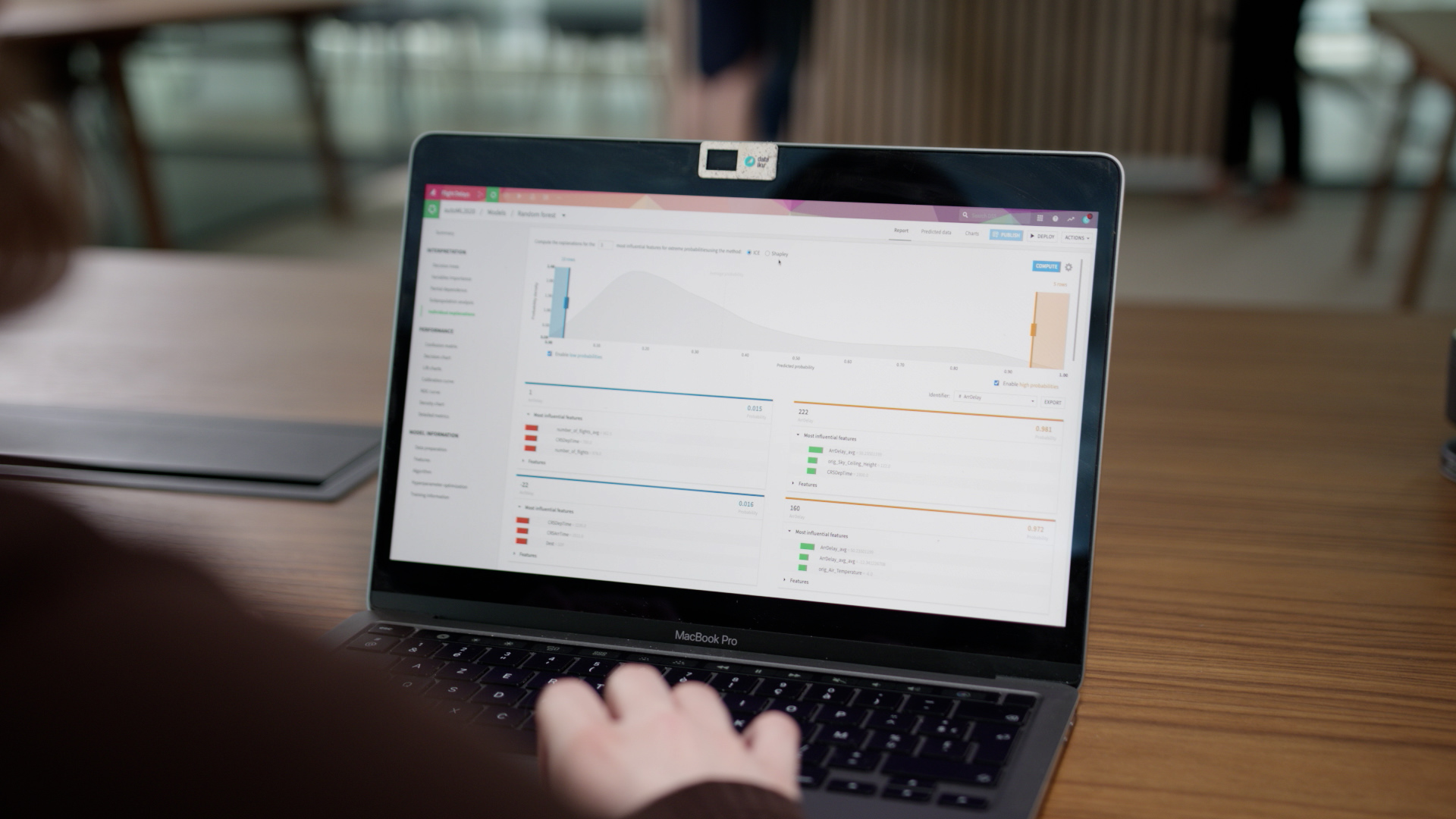Collaboration has always been an integral element of successful data science, but the concept moved into the spotlight as the global health crisis swiftly shifted the dynamics of data teams everywhere — in the blink of an eye, they were forced to navigate their data science projects (both those that were in progress and that hadn’t begun yet) in a remote world.
Here, we’ll highlight a few reasons why systemization is the future of data science collaboration and why teams need to get on board or risk falling behind.
Systemization Is the New Norm (and, Hint, Critical for Advancing AI Maturity)
Systemizing the use of data and AI is about infusing it everywhere and among everyone, so that processes and technology are so deeply ingrained that every part of the organization thrives based on them. Organizations can’t achieve this level of breadth and depth in data, analytics, and AI processes or capabilities if they stop at collaborative data science. By collaborative data science, we mean:
- Coordination across the entire data science workflow, which ends up leaving out workflows that fall outside of the traditional raw data to modeling to insights process of data science (i.e., self-service analytics and traditional business intelligence)
- Boosting data science productivity and agility, which enables core data science teams but leaves the masses out of the picture
- Smoother processes between largely technical profiles like data scientists and engineers, which is helpful but ultimately needs to include non-technical profiles such as analysts and subject matter experts from the business
While data science collaboration is a good starting point — enabling everyone to contribute their unique talents to each data project — teams need to be able to build off of that to achieve results. They need to ensure that AI is so deeply ingrained and intertwined with the workings of the day to day that it becomes part of the business and isn’t just used or developed by one central team (such as data scientists). A critical element of systemization is AI augmentation, meaning people and AI technology working together to boost performance. In order to move from 10 to 1000s of models in production, systemization becomes the de facto way to get more people to use AI.
It’s Much More Than Integration With Collaboration Platforms
Now we’re not saying that a team’s potential AI platform shouldn’t be able to easily integrate with current technologies (think programming languages, Git for version control, machine learning model libraries, and more). It should. It should also be able to easily speak to other collaboration platforms like Slack and Microsoft Teams.
But there’s more to it. It comes down to an organizational alignment between data science teams and decision makers even before model development starts (i.e., Is the business problem realistic/feasible for the business experts and data scientists to solve together? Is there a clear path to value? What are the risks involved? How will the business implement changes to process or results measurement following the data project?). Doing so will help data teams guarantee that their model results are adopted and can start making a tangible impact on the business. Plus, a less tangible benefit is the confidence and trust that key stakeholders will have in any teams working on AI projects.

It’s No Longer a Nice-to-Have, It’s Table Stakes
Systemization is the future, particularly when it comes to productivity and cross-functional collaboration in practice. Here are a few examples of how a defunct collaboration practice can manifest (check out the full ebook for the entire list):
- Too much time is spent on building communication material to make up for the lack of actual communication within and across teams. As a result, less time is spent on operations and business-impacting material.
- Significant amounts of time are spent looking for the right data or analytics asset (i.e., “Do you remember who did the last yearly analysis?”).
- There are gaps when projects are moved to production because there is no documentation or stakeholders from the business side.
What’s In It for You?
So, you might be saying, “This is a compelling argument. But why is systemization actually better for me and my counterparts?”
As we’ve mentioned, while collaborative data science is essential, it’s a small part of the whole (meaning systemization of data and AI). Collaboration in data science isn’t going anywhere and should be something teams discuss and make a plan for prior to jumping in to any projects. Here are some questions to ask yourself when determining if systemization makes sense for your organization:
- While collaboration itself leads to smoother processes between technical profiles, don’t analysts and other non-technical profiles have a stake in the game too?
- Coordination across the data science workflow is great, but shouldn’t other analytics processes like self-service analytics and traditional business intelligence play a role?
- Do you believe that we have a responsibility to empower people outside of the data science team or center of excellence to be productive and agile with data?
- Do you think members of various teams would be more productive if they had a single place for discussion and data projects?
- Is it important to you for teams to be able to publish and share insights from data projects with other users and business stakeholders with custom dashboards and apps?
If you answered yes to all of the above, systemization is the only path forward.
In the end, not having collaboration tightly embedded across all teams, processes, and tools will lead to organizational deficiencies and productivity impacts. While there are different maturity levels for organizations in terms of analytics and AI collaboration based on where they are in their journey, systemization is a nonnegotiable that will ensure streamlined workflows, insights sharing, added levels of agility, and time saved.





